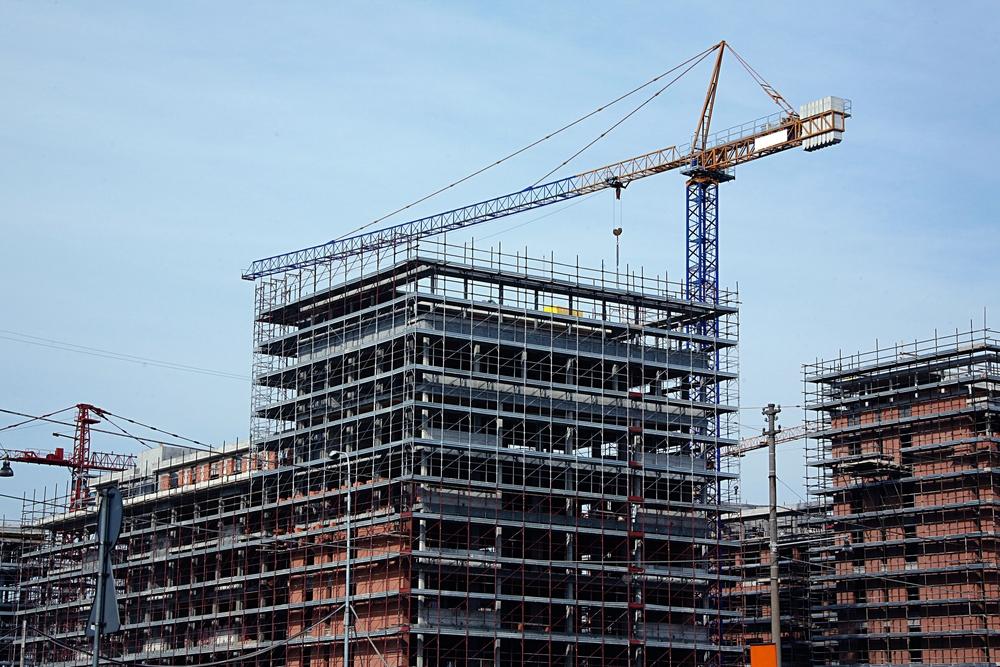How Technology Can Improve Safety in Construction
How Technology Can Improve Safety in Construction

Technology Can Improve Safety in Construction: The construction industry is inherently hazardous, with workers facing a range of potential risks on the job site. However, advancements in technology are revolutionizing safety practices, helping to mitigate risks and protect workers. From wearable devices to drones, technology is making construction sites safer and more efficient. This article explores various technological innovations that enhance safety in construction, their benefits, and the future of safety in the industry.
Key Technologies Improving Safety in Construction
1. Wearable Technology
Wearable devices, such as smart helmets, vests, and safety glasses, are gaining traction in the construction sector. These devices can monitor workers’ health, location, and environmental conditions.
- Health Monitoring: Smart helmets can track vital signs like heart rate and body temperature, alerting supervisors to potential health issues.
- Fall Detection: Wearable devices equipped with sensors can detect falls and automatically alert emergency responders.
- Geolocation Tracking: Wearables can help track workers’ locations in real time, ensuring that they are safe and accounted for, especially in hazardous areas.
2. Drones
Drones are increasingly being used in construction for site inspections, monitoring progress, and enhancing safety.
- Site Surveys: Drones can perform aerial surveys of job sites, identifying potential hazards and hard-to-reach areas without putting workers at risk.
- Real-Time Monitoring: Drones provide real-time footage of construction activities, allowing project managers to identify safety issues quickly and address them before accidents occur.
- Incident Response: In the event of an accident, drones can be deployed to assess the situation and gather data for emergency responders.
3. Building Information Modeling (BIM)
BIM is a digital representation of a building’s physical and functional characteristics, facilitating better planning and coordination.
- Safety Planning: BIM allows construction teams to visualize the entire project, identifying potential hazards before construction begins. This proactive approach helps in creating safer work environments.
- Collaboration: BIM fosters collaboration among various stakeholders, enabling teams to communicate effectively about safety protocols and changes in design that may impact safety.
4. Safety Management Software
Safety management software streamlines the process of managing safety protocols, incidents, and compliance.
- Incident Reporting: Software allows for easy reporting and tracking of safety incidents, facilitating quick responses and investigations.
- Training Management: These platforms can manage training schedules, ensuring that all workers receive necessary safety training and certifications.
- Compliance Tracking: Safety management software helps organizations stay compliant with regulations by tracking safety audits, inspections, and reporting.
5. Virtual Reality (VR) and Augmented Reality (AR)
VR and AR are being utilized for training and simulation, providing immersive experiences that enhance safety awareness.
- Training Simulations: VR can create realistic training scenarios for workers to practice handling hazardous situations without any risk. This prepares them for real-life challenges.
- AR Applications: AR can overlay safety information and instructions onto the physical environment, guiding workers in real-time about potential hazards and safety measures.

6. Robotics and Automation
The use of robotics and automation in construction is increasing, helping to reduce human exposure to dangerous tasks.
- Automated Machinery: Robotic systems can perform dangerous tasks such as heavy lifting, demolition, and hazardous material handling, minimizing the risk to human workers.
- Remote Operation: Some machinery can be operated remotely, allowing workers to control equipment from a safe distance, reducing the likelihood of accidents.
Benefits of Implementing Technology for Safety
1. Enhanced Risk Awareness
Technology improves risk awareness among workers by providing real-time data and insights. Wearable devices and monitoring systems enable proactive measures to prevent accidents.
2. Reduced Accidents and Injuries
The implementation of safety technologies leads to a decrease in accidents and injuries on construction sites, creating a safer work environment.
3. Improved Compliance
Safety management software and training tools help construction companies stay compliant with safety regulations and standards, minimizing legal liabilities.
4. Increased Productivity
When workers feel safe, they are more productive. The use of technology can enhance safety without sacrificing efficiency, leading to better overall project outcomes.
5. Cost Savings
Reducing accidents and injuries can lead to significant cost savings in terms of workers’ compensation claims, legal fees, and project delays.
Future of Safety in Construction
The future of safety in construction will continue to evolve as technology advances. Key trends to watch include:
- Artificial Intelligence (AI): AI will play a role in analyzing data collected from safety devices and systems, predicting potential risks, and suggesting preventive measures.
- Integration of IoT: The Internet of Things (IoT) will further connect devices and systems, allowing for seamless communication and real-time safety monitoring.
- Data-Driven Decision Making: The use of big data analytics will enable construction companies to identify patterns and trends in safety incidents, leading to informed decision-making.
Conclusion
Technology is transforming safety in the construction industry, providing innovative solutions to mitigate risks and protect workers. By embracing advancements such as wearable devices, drones, and safety management software, construction companies can create safer environments and reduce the likelihood of accidents. As technology continues to evolve, the potential for improving safety in construction will only increase, paving the way for a more secure and efficient industry.
External Resources for Legal Guidance
Technology Can Improve Safety in Construction
Read more related articles to enhance your knowledge and make informed decisions
10 Essential Steps in the Building Construction Process
How to Choose the Right Materials for Your Construction Project








